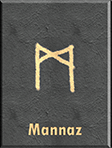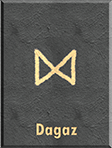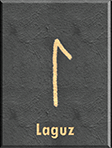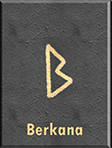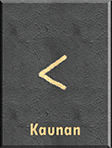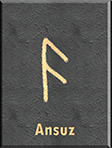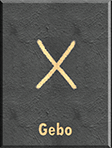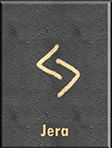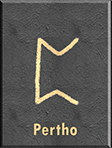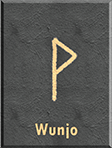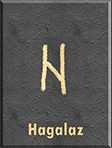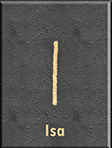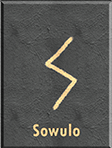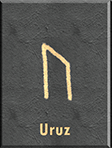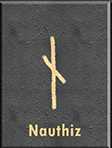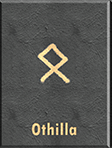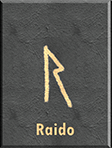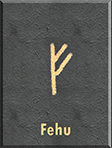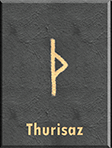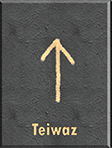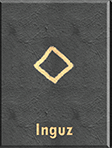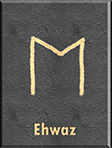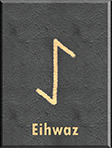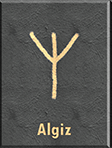A complete list of Runes
This is a complete list and guide to all things Rune. There is a full list of all Runes with their origins, meanings, uses, and pronunciations. Click on one of them to have a deep dive into all that each Rune entails. Here is a link to the Complete guide that has a Quick guide glossary to give you an overview of each Rune and a link to the in-depth article. https://www.mythologymerchant.com/elder-futhark-the-norse-rune-complete-guide/
Mannaz: Norse Rune Deep Dive – Mythology Merchant
Mannaz is an important rune in the Elder Futhark, it means “mankind” and represents self actualisation. It forms the “m” sound in many proto germanic languages
Dagaz: Norse Rune Deep Dive – Mythology Merchant
Dagaz means both “day” and “enlightenment” its rune in the Elder Futhark represents the “d” sound in many proto germanic languages in ancient Europe
Laguz: Norse Rune Deep Dive – Mythology Merchant
Laguz means “lake” in ancient Norwegian, it’s also an important rune in the Elder Futhark, forming the “l” sound in many proto germanic nations
Berkana: Norse Rune Deep Dive – Mythology Merchant
Famously part of the “bluetooth” digital technology emblem, the Berkana rune means “birch goddess” and is the “b” sound in the Elder Futhark
Kaunan: Norse Rune Deep Dive – Mythology Merchant
Kaunan, or “Kenaz” is a rune with a somewhat mysterious meaning. The closest translation is “torch” and it makes up the hard “c” or “k” sound in Elder Futhark
Ansuz: Norse Rune Deep Dive – Mythology Merchant
Ansuz means “god breath” and symbolizes speech and the passage of wisdom. It transliterates into the “a” sound in the Elder Futhark
Gebo: Norse Rune Deep Dive – Mythology Merchant
Gebu (or Gyfu) is an Elder Futhark rune meaning “gift” or “to give”. It represents generosity and commerce, and is the hard “g” sound of proto germanic language
Jera: Norse Rune Deep Dive – Mythology Merchant
Jera rune means “harvest”, and is used to represent the passage of time, “in 3 harvest’s time” for example. It’s actually the origin for the English word “year”
Pertho: Norse Rune Deep Dive – Mythology Merchant
Pertho is one of the most mysterious runes of the Elder Futhark, it has very unclear origins as a word, and seems to simply represent the “p” of a popping sound
Wunjo: Norse Rune Deep Dive – Mythology Merchant
Wunjo, meaning “bliss” in proto germanic, is an Elder Futhark rune which most closely resembles a long “u” sound, but can also be used for the “w” sound
Hagalaz: Norse Rune Deep Dive
Forming the hard “h” sound in the Elder Futhark, “Hagalaz” literally translates to “hailstone” in proto germanic languages.
Isa: Norse Rune Deep Dive
The simplest Elder Futhark rune, both in form and meaning, Isa means “ice” and forms the long “i” sound in proto germanic languages.
Sowulo: Norse Rune Deep Dive
Sowulo is an unusual rune, it forms the “s” sound in the Elder Futhark, but is designed unlike any other rune. It may derive from earlier ancient Greek letters
Uruz: Norse Rune Deep Dive
Uruz forms the “u” sound. A mysterious rune, it may have meant rainwater or dirty water in Iceland, but means “Auroch” (an ancient buffalo) in most of Europe
Nauthiz: Norse Rune Deep Dive
Nauthiz is a rune in the Elder Futhark, the “n” in the proto germanic alphabet. It means “vital needs” and is often a reference to food, water or fire.
Othilla: Norse Rune Deep Dive
A very important rune meaning “heritage”, usually in a masculine form such as “from father to son” the Othilla rune is the “o” sound in the Elder Futhark
Raido: Norse Rune Deep Dive
A rune meaning “to ride”, one of the easier meanings to remember! The rune is modelled after a horse’s head and is the “r” sound in the Elder Futhark
Fehu – Norse Runes Examined in Depth
An Elder Futhark rune meaning either “herd of livestock”, either sheep or cattle, Fehu represents the “f” sound in proto germanic languages
Thurisaz – Norse Runes Examined in Depth
An Elder Futhark rune meaning either “thorn” or “giant-like” depending on interpretation, Thurisaz represents the “th” sound in proto germanic languages
Teiwaz – Norse Runes Examined in Depth
Teiwaz, or Tiwaz, means “spear” the emblem of the god of war, Tyr. It’s also a rune in the Elder Futhark, representing the “th” sound in proto germanic language
Inguz – Norse Runes Examined in Depth
Inguz (also Ingwaz or Ingwi) is one of the more mysterious runes in the Elder Futhark. Unlike most, used as letters, Inguz is believed to represent the god Frey
Ehwaz – Norse Runes Examined in Depth
Ehwaz is an Elder Futhark rune meaning “horse” in proto germanic languages. One of the runes not carried into the Younger Futhark, it forms the short “e” sound
Eihwaz – Norse Runes Examined in Depth
Eihwaz is the modern name for a rune in the Elder Futhark, combining the celtic and proto germanic words for “yew” (Eihaz and Eiwaz), it is the short “i” sound
Algiz – Norse Runes Examined in Depth
Algiz, or Elhiz, is a rune in the Elder Futhark and means “Elk”. It’s most commonly transliterated as the “z” sound of proto germanic languages.
Runes are a type of writing system used by the Germanic peoples of northern Europe, Scandinavia, the British Isles, and Iceland from around the 3rd to the 13th centuries AD. Runes were typically carved into wood or stone, and they were used for a variety of purposes, including magic, divination, and writing. The best-known form of runes is the Elder Futhark, which consists of 24 different characters. Each character has a name and a meaning, and they can be combined to form words and phrases. Runes were also used as a form of currency, and some Viking burial sites contain large numbers of rune stones. Today, runes are still used by some people for divination and magic. They have also been adopted as a symbol by various neo-pagan and occult groups.

